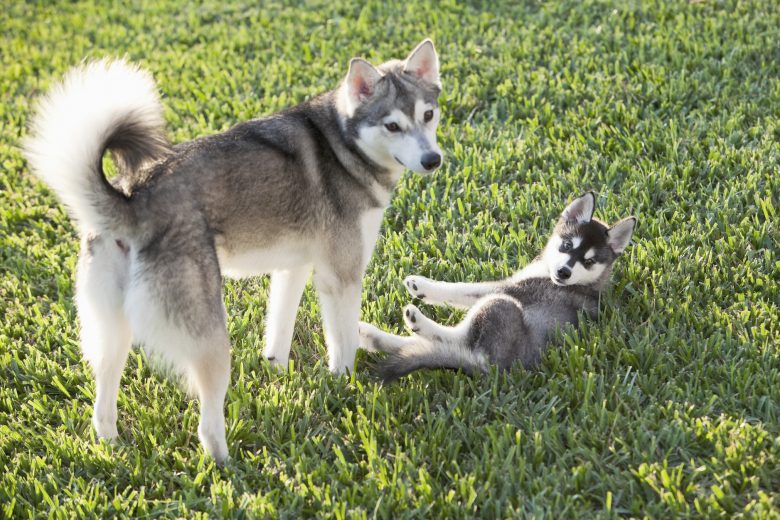The double coat of the Alaskan Klee Kai should be of sufficient length to give a well-furred appearance but not so long as to obscure the overall outline of the dog. The neck is well-furnished with hair, which forms a protective ruff that blends into the apron. The tail is well-furred with longer hairs at the base and on the underside of the tail. Longer coated dogs are also allowed to have some feathering on the rear of the front legs and the rear of the hindquarters from the buttocks to the hock joint; underside of the body; and the ears. The undercoat is soft and dense and of sufficient length to support the outer coat. The guard hairs of the outer coat are straight, slightly coarse but never harsh. The absence of undercoat during the shedding season is normal.
Table of Contents
Alaskan Klee Kais as Watch Dogs?
From day one, the purpose of the Alaskan Klee Kai has been to be a cute, active companion for owners. Unlike the majority of older dog breeds, these little dogs were never meant to be hunters, farm dogs, guard dogs, or anything other than a companion.
Are Alaskan Klee Kais Aggressive?
Generally, Alaskan Klee Kais are not aggressive, but they do not like being mistreated. These dogs are not comfortable around strangers but can be very affectionate and loving with their families.
Alaskan Klee Kais Background
Background:
Hereditary factor VII (FVII) deficiency is characterized as a mild bleeding disorder in Beagles, caused by a missense mutation in exon 5 of the FVII gene. An Alaskan Klee Kai dog with severe bleeding after trauma was diagnosed with FVII deficiency based on coagulation testing. Molecular analyses were undertaken to identify the genetic basis of the defect in this breed.
Family and Bonding
They also tend to be shy around strangers and are prone to expressing their emotions with whines and barks. An inexperienced pet parent would find it difficult to take on the challenge of caring for an Alaskan Klee Kai. But for an adopter who keeps up with training and physical activity, this breed is sweet, loyal, and happy to shower loved ones with affection.
Friendly
Alaskan Klee Kais are intelligent, energetic, and loving to their families. They don’t much care for strangers and require lifelong socialization training if they are to be friendly to new people. Their wariness of new faces does, however, make them excellent watchdogs.
Alaskan Klee Kai Nature
An Alaskan Klee is a companion dog. They have high energy, jolly, and typical go-to dogs! They are mildly furry dogs and are at times called cuddle buddies. As they have come from Alaska, they are well-adjusted to cold weather, because of their double-coated fur. Alaskan Klee Kais are available in red, brown, and black in combination with white. These are their coat colors. They have a curious and aloof temperament. They have a minimal level of grooming. Alaskan Klee Kai dogs are carnivores in nature but can eat boiled eggs and fruits.
Intelligence
Since these little pups have a lot of energy and are smart, you can try some new, exciting activities like agility training. These training classes challenge your dog both physically and mentally, which is why it is the perfect activity for an Alaskan Klee Kai. Some people don’t realize that small dogs like the Klee Kai are well-suited to agility training. Unfortunately, finding an agility training facility can be challenging. Once you find a place, you can work with an instructor to teach your dog the different pieces of the course. Throughout training, you will see your dog learning all kinds of new skills on the course.
Love
Alaskan Klee Kais as a Pack Animal
Alaskan Klee Kais, also known as mini huskies or a smaller version of a Siberian husky, are one of the rarest breeds in the world. They weigh between 10 to 20 pounds and they typically range from 13 to 17 inches tall. These dogs are energetic, emotional, and protective of their owners.
Physical Traits
Because they are a smaller breed, the Alaskan Klee Kai is suitable for many different homes of many different sizes. However, they will thrive in a home where they have a yard to play in and to exercise.

